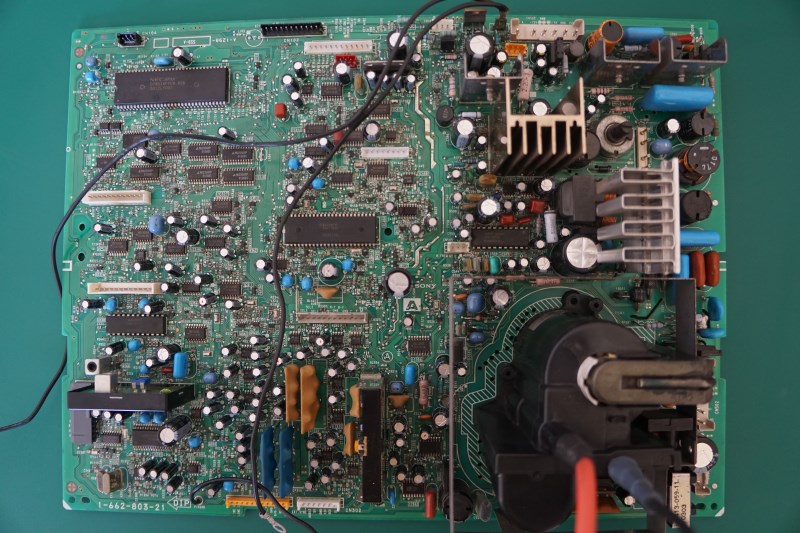Replacing all those capacitors…
To help make replacing all the capacitors easier I marked all the old ones with various colour marker pens and made my own colour code legend to work from.
In doing so I found that I had 1 too many 25v 47µF capacitors installed (I was marking them purple) according to the capacitor map/list I had compiled from the service manual. So I double checked and found that location C1382 should have a 100µF 10v capacitor installed. At some point in the past this capacitor must have been replaced and it does appear that this may have been done due to a service update, however I can not 100% confirm this and using either 100µf or 47µf seems to make no perceivable difference.
Also you can see a few polymer capacitors had been installed but it is perfectly fine to replace them with electrolytic capacitors.
It really does pay to have a service manual at hand.
I had spent a lot of time doing this tedious work and was getting very tired.
Can you spot my mistake?
Click through to the larger image if you can not spot it… 
On most good PCB all capacitors will generally only have the negative poles universally facing in two directions. This makes spotting a mistakes at a glance a lot easier. But always double check everything.
192/192 - Recapping completed:
Flyback re-installed and ground cable re-connected on the A “motherboard” PCB:
G “PSU” PCB re-inserted into its plastic housing ready to have its ground and heat shield re-attached:
Q “I/O” PCB needed re-attaching to its I/O connectors and soldered back together.
The remote port is quite difficult to get its small pins lined back up with the PCB and I was having trouble with getting the pins 9,10,11,12 to stop bridging with each other which was a bit frustrating but ultimately pointless as after checking its pin-out found they are all ground pins so having them bridged makes no difference what-so-ever!
The C “Neck” PCB also had its 3 capacitors replaced but I forgot to take another photograph of it!
And here is a small plastic tub full of the removed capacitors:
Re-assembling:
First I put the motherboard back in its plastic housing and screwed it back down to it. Then I slid it back into the PVM tray housing and started to re-connect everything that is at the “screen” front of the PVM as getting access to them later would be difficult.
While there is an awful lot of cables to re-attach during this assembly, all the connectors are unique so you really can not go wrong, but I had previously left them all hanging close to their original locations anyway.
Next I re-attached the PSU and the re-connected its cabling again from the “screen” front of the PVM before sliding the motherboard fully back into the PVM.
I then re-attached the Neckboard to the CRT and the I/O board back in its location to the rear of the motherboard sliding tray housing. Followed by connecting the focus adjustment pots back to the I/O board and then screwing back in the ground plates and all the ground wires, along with connecting any remaining wiring.
Finally I re-attached the anode cap to the CRT and started praying will this still work?
To be continued tomorrow, I need sleep now and still a fair bit to write up!


















